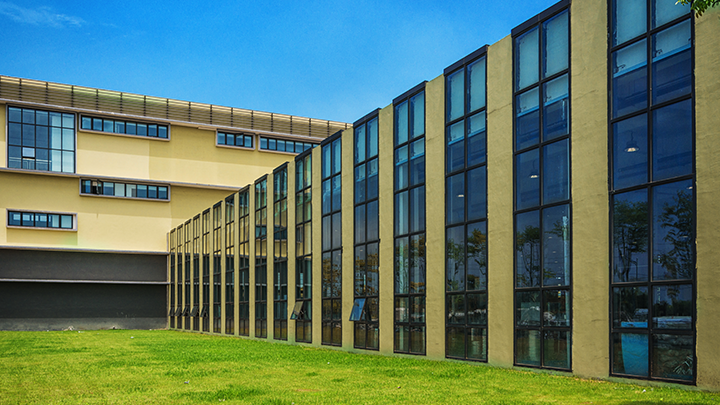The COVID-19 pandemic disrupted industries worldwide, leading to a plethora of challenges in various sectors. One such area affected is the labor market, which has experienced a significant shortage of workers. This labor shortage has had a profound impact on facility managers, causing disruptions in operations and posing challenges in maintaining optimal facility conditions. In this article, we will explore how COVID-19 has contributed to the labor shortage and delve into its effects on facility managers and operators. Additionally, we will discuss recent studies highlighting the impact of the labor shortage in the facility space, along with valuable tips to combat its side effects.
The COVID-19 Labor Shortage:
The COVID-19 pandemic resulted in widespread layoffs, business closures, and economic uncertainty. Many workers lost their jobs due to reduced demand, workplace restrictions, and lockdown measures. Although some industries have begun recovering, the labor market has not bounced back at the same pace. Workers have faced obstacles such as health concerns, lack of childcare options, and reevaluation of work-life balance, leading to a hesitancy to return to the workforce.
Effects on Facility Managers:
Facility managers and operators have been significantly impacted by the labor shortage caused by COVID-19. The reduced workforce has posed challenges in maintaining regular facility operations, affecting maintenance, repairs, and overall facility management. Here are a few key areas where facility managers have experienced the consequences of the labor shortage:
- Increased Workload: With fewer staff available, facility managers have found themselves shouldering increased responsibilities, often taking on additional tasks that were previously handled by a larger workforce. This added workload can lead to burnout and decreased efficiency.
- Delayed Repairs and Maintenance: The shortage of skilled labor has resulted in delays in addressing repairs and maintenance issues, which can negatively impact the condition and functionality of facilities. These delays can have a cascading effect on productivity and occupant satisfaction.
- Higher Labor Costs: To attract workers in a competitive labor market, facility managers may need to offer higher wages and benefits, increasing labor costs. This financial strain can challenge the budget allocated for facility management.
Impact of Labor Shortage in the Facility Space:
Several recent studies have shed light on the consequences of the labor shortage in the facility space. These studies highlight the following effects:
- Reduced Service Quality: The labor shortage has led to reduced service quality, with facilities experiencing longer response times for repairs, diminished cleanliness, and an overall decline in the standard of facility maintenance.
- Increased Maintenance Backlogs: Facility managers have reported growing backlogs of maintenance tasks due to insufficient workforce. This backlog can accumulate over time, leading to a backlog that becomes increasingly challenging to address.
- Negative Tenant and Occupant Experience: The labor shortage can result in an unsatisfactory experience for tenants and occupants. Delays in addressing maintenance issues and reduced service quality can affect their perception of the facility and potentially lead to tenant dissatisfaction or even early lease termination.
Tips to Combat Labor Shortage Side Effects in the Facility Space:
While the labor shortage presents challenges, facility managers and vendors can adopt strategies to mitigate its impact. Here are some tips to combat the side effects:
- Prioritize Preventive Maintenance: Emphasize preventive maintenance to reduce the likelihood of breakdowns and minimize the need for immediate repairs.
- Implement Technology Solutions: Explore technology tools like computerized maintenance management systems (CMMS) or facility management software to streamline workflows, improve efficiency, and reduce manual labor requirements.
- Cross-Train Staff: Cross-training employees in various facility tasks can enhance flexibility and enable a more dynamic workforce capable of addressing multiple issues.
- Enhance Recruitment and Retention Efforts: Review recruitment strategies and offer competitive compensation packages, benefits, and career development opportunities to attract and retain skilled workers.
- Collaborate with Service Providers: Forge strong partnerships with reliable service providers who specialize in facility management tasks. Outsourcing services such as janitorial work, landscaping, and maintenance can help bridge the labor gap and ensure essential facility services are efficiently handled.
- Conduct a Comprehensive Vendor Evaluation: When selecting service providers, perform thorough evaluations to ensure they have a proven record of accomplishment of quality work, reliability, and the capacity to meet your facility's specific needs. Seek recommendations and conduct interviews to assess their expertise and responsiveness.
- Implement Service Level Agreements (SLAs): Establish clear SLAs with service providers to define performance expectations, response times, and quality standards. Regularly review and monitor their adherence to these agreements to ensure optimal service delivery.
- Engage in Proactive Communication: Foster open lines of communication with service providers. Regularly communicate your facility's requirements, priorities, and any changes in expectations. Promptly address any concerns or issues that arise to maintain a strong working relationship.
- Implement Real-Time Monitoring and Reporting Systems: Utilize technology solutions that enable real-time monitoring and reporting of service provider activities. This allows you to track their performance, identify any bottlenecks or delays, and address them proactively.
- Develop Contingency Plans: Establish contingency plans in case of unexpected labor shortages or disruptions in service provider availability. Maintain a list of backup service providers or alternative solutions to ensure continuity of facility operations.
Conclusion:
The labor shortage caused by the COVID-19 pandemic has presented significant challenges for facility managers. The impact of this shortage on the facility space includes increased workloads, delayed maintenance, and higher labor costs. However, by implementing strategies such as prioritizing preventive maintenance, leveraging technology, cross-training staff, enhancing recruitment efforts, and collaborating with service providers, facility managers can effectively combat the side effects of the labor shortage and maintain optimal facility conditions. Adapting to the current labor market dynamics will be crucial for the resilience and success of facility management in the post-pandemic era.









